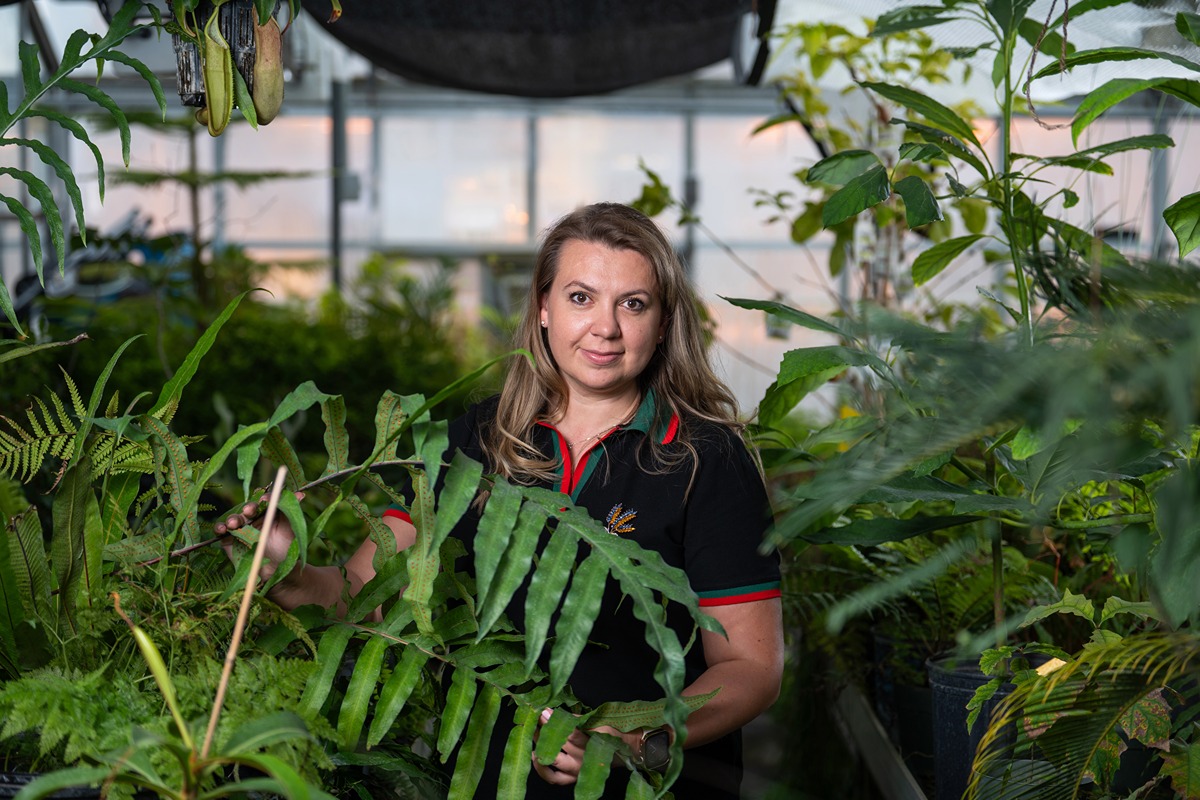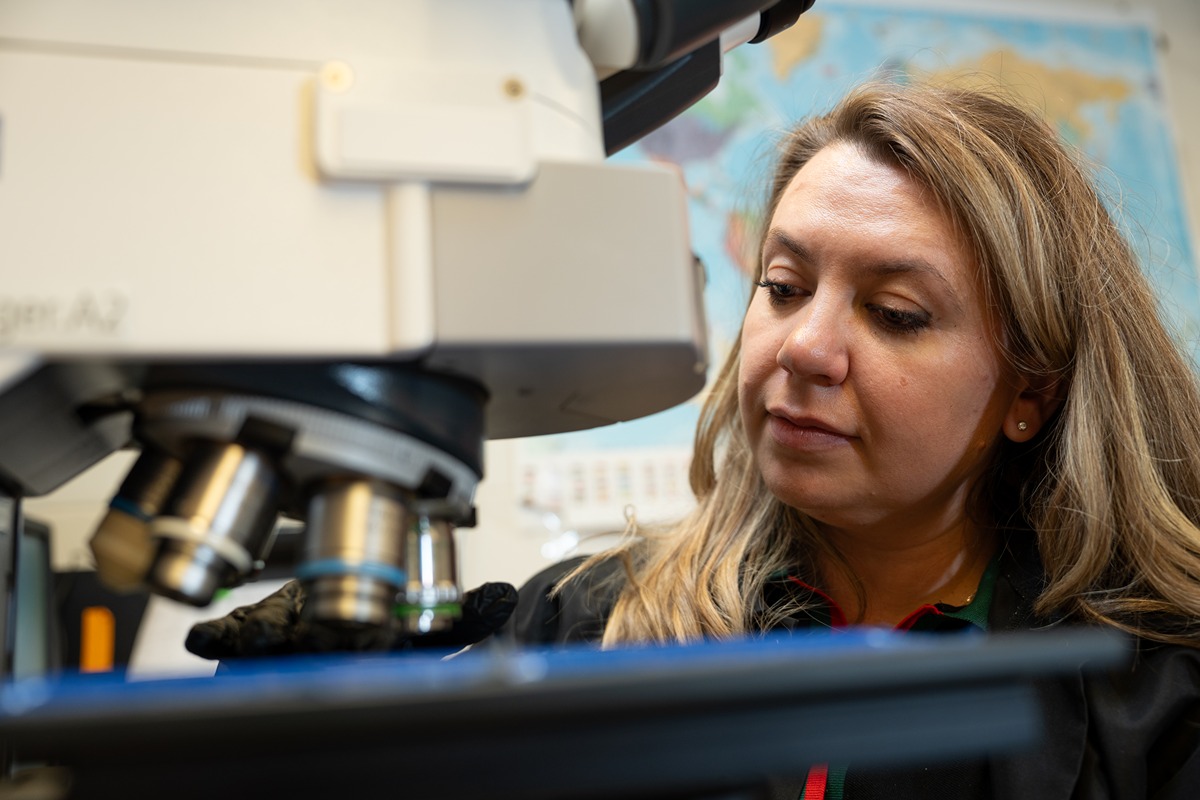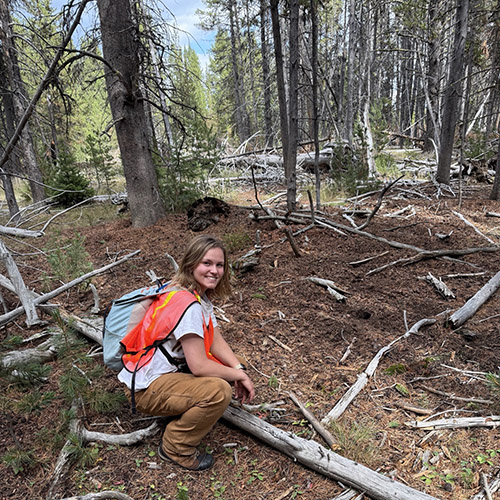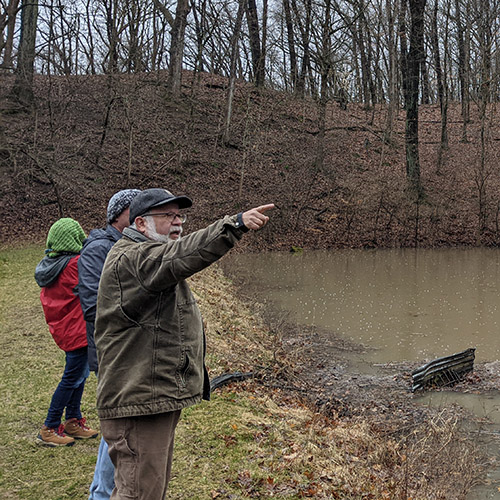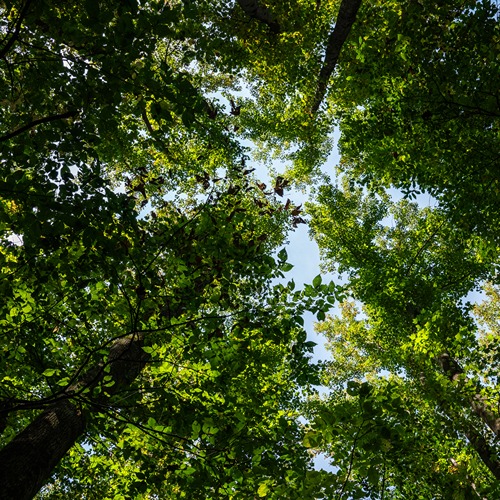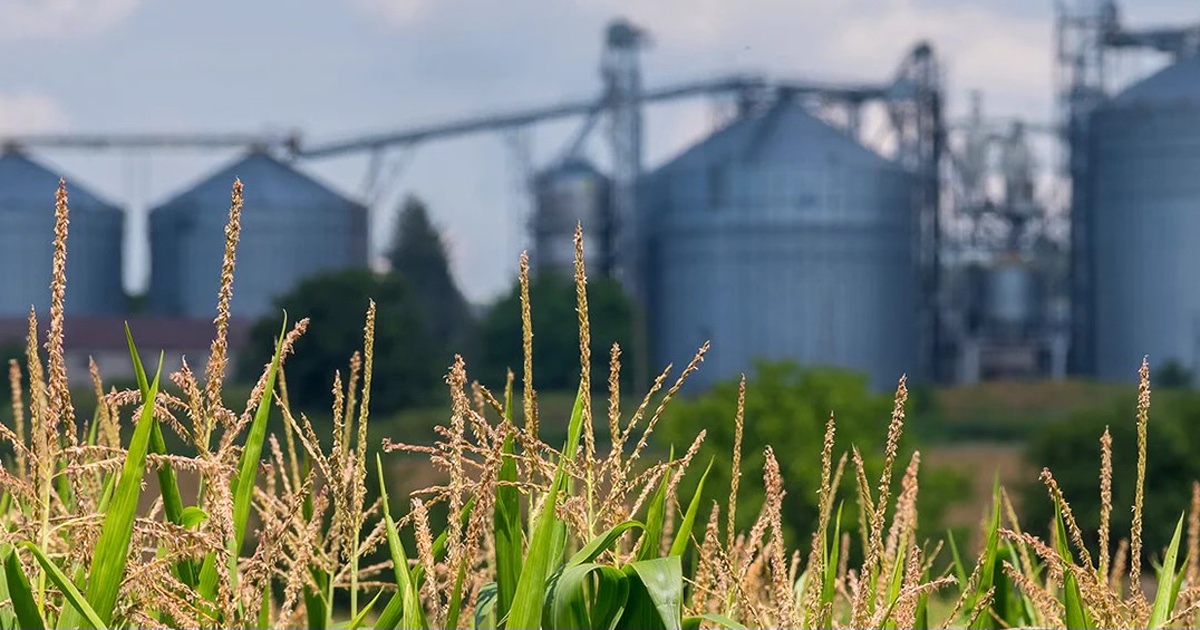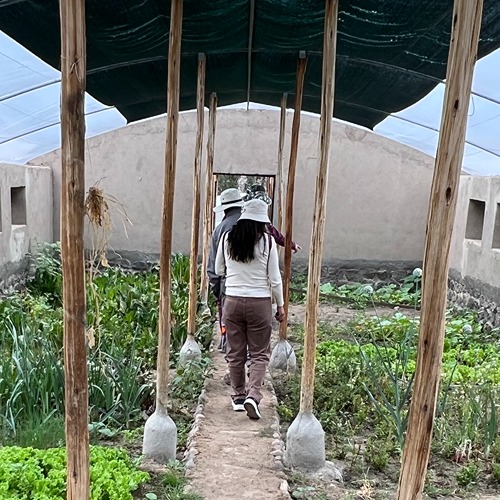Second plant, second chance, second home: Ukrainian Scholar Yuliia Khoma
Three golden heads of wheat, each seed a blue or yellow crystal, form a brooch on Yuliia Khoma’s sweater. In Ukraine, Khoma’s home, even the country’s two-stripe flag represents a blue sky over golden wheat — a sign of prosperity, hope and the power of life.
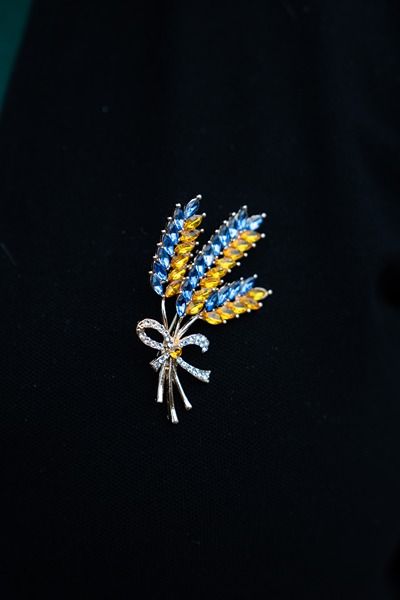
Plants aren’t just beauty, they are power. Plants help people. We can use plants in different directions — from food, to medicines to bioenergy. That’s why I’m excited to work with plants every time.”
- Yuliia Khoma, Ukrainian Scholar and PhD in Botany and Plant Pathology
Khoma began her study of plant science in Ukraine, where she studied willows and poplar trees. Her doctoral work explored how these fast-growing tree species respond to drought and salinity, aiming to identify resilient trees that could be grown on poor soils for biomass production. These trees can be processed into wood pellets — a renewable fuel with growing importance in global bioenergy. Khoma also worked on pellet fabrication and secured patents related to improving their physical properties, and she developed in vitro micropropagation techniques to support large-scale cultivation of these trees.
Khoma relocated to the U.S. with her son and husband through a scholar support program offered by Purdue University with additional assistance from the College of Agriculture, seeking the opportunity to continue her scientific work and complete her dissertation.
In March 2022, former Purdue President Mitch Daniels started Purdue’s Ukrainian Scholars Initiative, one of the first and largest university-led programs to help faculty and PhD students whose academic pursuits were stalled by the war in Ukraine. With additional funding from The Heritage Group, this program has offered 20 individuals the chance to continue their work and research. Current Purdue President Mung Chiang has continued to support and expand the Ukrainian Scholar Initiative.
Khoma’s PhD focused on plant micropropagation, biotechnology and stress physiology, skills which she brought to the lab of professor Scott McAdam’s in Purdue’s Department of Botany and Plant Pathology and expanded her focus to the anatomy and developmental potential of cells that conduct water in a plant — the xylem. This collaboration has led to a recent publication in New Phytologist, a leading international journal in plant science.
“I had never worked with plant anatomy before, so this was a first for me. But I was excited to learn something new in the amazing lab of professor Scott McAdam, who is a brilliant scientist and a great mentor. Joining his lab gave me a chance to explore a whole new field. He showed me how to do the experiments, explained the reasoning behind them and gave me a completely new experience in plant anatomy and physiology,” Khoma said.
Water and dissolved nutrients move through most plants through a specialized tissue called xylem, which is dead at maturity. With thick, hard cell walls and no organelles to crowd the way, water is sucked from the soil into the roots, through the shoots to the leaves of a plant, similarly to how water might travel upwards in a straw.
Most plants on land have narrower xylem at the tips where they are growing new tissue, and wider xylem towards the roots. This tip-to-base widening has left scientists puzzled — is it simply the way cells grow and expand, or is there an evolutionary adaptation to having tips with thin xylem to better pull water upwards?
In McAdam’s lab, Khoma studied the xylem of ferns. Ferns are one of the oldest plant groups on land, growing long before flowers even evolved. These early land plants are heavily reliant on water, growing often on damp forest floors or close to streams. Beside their leafy fronds, ferns often have modified stems that skim the ground called rhizomes. Some rhizomes require constant contact with water, while others can survive in air.
These different rhizomes proved to be the perfect tissue for Khoma to answer the question of whether the tip-to-base widening was an evolutionary adaptation or not in her recent paper published in New Phytologist. She cut sections of aerial and aquatic rhizomes of three different fern species (Marsilea hirsuta L., Equisetum giganteum L. and Phlebodium pseudoaureum), and measured the diameter of their xylem channels at different points from the rhizome’s growing tip under the microscope.
“We observed tip-to-base widening in rhizomes that grow in air. It may reflect a similar principle to what we see in tall plants like trees — as they grow taller, their xylem conduits widen from tip to base, which may help maintain hydraulic efficiency. Even when rhizomes grow horizontally or downward in air, they still need to move water along their length.” Khoma said. “In contrast, we didn’t observe anatomical changes in xylem conduits in rhizomes growing underwater or on the soil surface. When plants have constant access to water, the xylem appears more uniform — likely because water is always available and under minimal tension.”
Not only did this experiment teach Khoma microscopy skills, but it also gave her an understanding of how the physical mechanisms at play for water transport in plants can have a large impact on trees. If one can figure out how water transport in plants adapts to different conditions to better conduct water, they could better breed or genetically engineer plants to withstand drought and salty soils.
Khoma published her paper abstract simultaneously in Ukrainian and is growing poplars important for global bioenergy to examine xylem development in these trees.
“It was important for me, during such a difficult time, to show that Ukrainian scientists remain active and continue doing scientific work,” Khoma said. “I’m also happy I could share these findings in Ukrainian — it helped me stay close to my community and contribute, even in a small way, to my country and to science.”
Khoma said the Hoosier landscape isn’t much different from Ukraine. “I often feel here like I’m in my second home because everything reminds me of my country, and when you see the kind people here, it looks like home. I’m truly grateful to everyone at Purdue University who made this program possible, especially professor Scott McAdam, whose guidance allowed me to continue my research and complete my PhD in a peaceful and welcoming place, and I hope my work will be useful to the academic community that welcomed me so warmly.”

